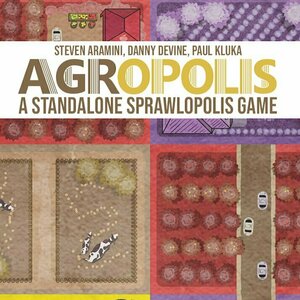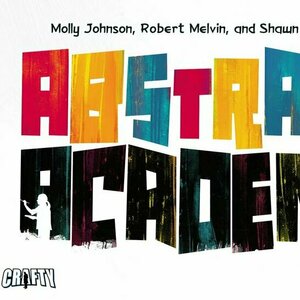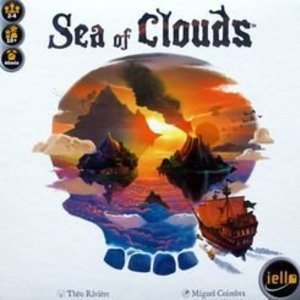
Happy Colors - Preschool Coloring Book for Kids & Toddlers
Games and Education
App
Happy Colors preschool coloring book brings new creative games for kids and toddlers who loves...
Lyndsey Gollogly (2893 KP) rated Assassins Gambit ( Hearts and Thrones book 1) in Books
Mar 17, 2023
Assassins Gambit (Hearts and Thrones book 1)
By Amy Raby
⭐️⭐️⭐️
Vitala Salonius, champion of the warlike game of Caturanga, is as deadly as she is beautiful. She's a trained assassin for the resistance, and her true play is for ultimate power. Using her charm and wit, she plans to seduce her way into the emperor's bed and deal him one final, fatal blow, sparking a battle of succession that could change the face of the empire.
As the ruler of a country on the brink of war and the son of a deposed emperor, Lucien must constantly be wary of an attempt on his life. But he's drawn to the stunning Caturanga player visiting the palace. Vitala may be able to distract him from his woes for a while - and fulfill other needs, as well.
Lucien's quick mind and considerable skills awaken unexpected desires in Vitala, weakening her resolve to finish her mission. An assassin cannot fall for her prey, but Vitala's gut is telling her to protect this sexy, sensitive man. Now she must decide where her heart and loyalties lie and navigate the dangerous war of politics before her gambit causes her to lose both Lucien and her heart for good....
I enjoyed it for the most part the start was a bit ropey and definitely had trigger warnings for rape and abuse but after the first quarter it became an easy likeable read. Characters were likeable and unlikeable in their own rights and the ending was pretty decent!

Al-Kitaab: Part 1: WITH Haki Bil-Libnani Bundle
Adnan Haydar, Paula Haydar and Nadine Sinno
Book
The Al-Kitaab Part One, Third Edition, with Lebanese Arabic Bundle includes Haki bil-Libnani:...
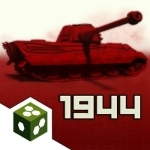
Tank Battle: East Front 1944
Games and Entertainment
App
Tank Battle: East Front 1944 is the penultimate title in the successful ‘Tank Battle: East...
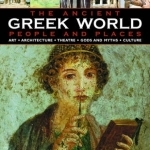
The Ancient Greek World - People and Places: How the Ancient Greeks Lived - An Authoritative and Highly Accessible Exploration of Society, Art and Architecture, Theatre, Sport and the Games
Book
Split into two parts, the book first traces the origin of the artistic achievements of Greece,...
Purple Phoenix Games (2266 KP) rated Agropolis in Tabletop Games
Sep 24, 2020
Disclaimer: We were provided a copy of Agropolis for the purposes of this preview. The components are not yet finalized, and will probably change from what you see here to the finished Kickstarter campaign. Agropolis is a stand-alone expansion to the popular ButtonShy title, Sprawlopolis. We have reviewed Sprawlopolis (as both a Solo Chronicles, as well as Multiplayer) in the past, so I do not intend to rehash the entire ruleset in this preview. -L
In Agropolis, players are working cooperatively to create a cohesive and thriving rural community. The overall gameplay is the same as Sprawlopolis, with a few thematic differences. To begin the game, randomly select 3 cards to dictate the scoring conditions for your specific game. Deal 1 card to each player (3 to the starting player), and place one card face-up in the center of the table. On your turn, you will draw a card, play a card into the communal countryside, pass your remaining cards to the next player, and then draw a new card. The goal is to create a countryside that scores enough points to surpass the combined total of the 3 scoring condition cards.
Each card is divided into four zones: cornfields, livestock pens, orchards, and vineyards. The selected scoring condition cards determine how you can earn and lose points for your card/zone placements in the countryside. That’s where strategy comes into play – you can’t just place your cards wherever you want! There has to be a method to the madness, and each placement must be carefully selected for maximum end-game points. When all cards have been played, tally up your points – earning points for each zone, gaining/losing points for scoring conditions, and deducting points for roads. If your final score is higher than the total of the 3 scoring conditions combined, then you have won!
As a big fan of Sprawlopolis, I am happy to report that ButtonShy has done it again with Agropolis. The overall gameplay and atmosphere is the same between both games, which adds a comfort and familiarity to the game, but the thematic differences and scoring conditions make the game feel subtly unique. Aside from a country theme, Agropolis has an optional challenge known as the Feed Fee. Certain cards have a feedbag and livestock symbol underneath the card’s score, and all cards have a combination of livestock symbols at the bottom of the scoring description. To play with the Feed Fee, simply count the number of that specific type of livestock across all 3 scoring condition cards and add that to your scoring total. You might even have multiple Feed Fees in play for a single game! That is a new added challenge unique to Agropolis, and can really up the ante of the gameplay.
Our preview copy of Agropolis also came with a 6-card combo pack expansion that allows you to combine both Agropolis and Sprawlopolis into one big game. To play with the combo pack, randomly select one scoring condition card from the three decks: Agropolis, Sprawlopolis, and the combo pack. Randomly select another combo pack card to be the starting card of your city/country blended community. On your turn, you will draw 1 Agropolis card and 1 Sprawlopolis card. Play only one of those cards to the tableau, and the other is discarded. When both draw decks run out, the game is over and points are tallied. This combo game is uniquely challenging because you have scoring conditions from both games. You can’t focus on the city-side and let the country peter out, because at least one of the scoring condition cards calls for a country-specific goal. This combo pack takes the simplicity of both games and really ups the amount of strategy required for success. Definitely a combo I will be playing a lot!
All in all, how is Agropolis? The gameplay itself is simple, strategic, and satisfying to play. Although nearly identical to Sprawlopolis, the thematic differences and country-specific scoring conditions make the game feel new and refreshing. I absolutely love the 6-card combo pack to combine both games together. It just heightens the gameplay and strategic considerations, and takes it from a smaller game to something with a little more heft. Some people are all about that city life, but I think Agropolis will show you the beauty of the rural community. Be sure to check out the Kickstarter campaign, going live on Tuesday, September 29th!
Purple Phoenix Games (2266 KP) rated High Noon in Tabletop Games
Mar 1, 2021
Disclaimer: We were provided with a copy of the game for the purposes of this preview. This is a finalized production copy, and the components you see pictured are those you will receive in your own game! Also, we were provided the 4-player starter set – the game is playable with more people when expansions are included. -L
High Noon is a game of action points, grid movement, and fighting, played over a series of 12 rounds, in which players take on the roles of various posses in the Wild West who are battling to collect the most gold in town. To setup for the game, each player selects a posse and receives their corresponding deck of cards, character sheets, and minis. Character sheets are placed in front of each player, and a red Poker Chip is placed on each to track the Health of each character. Setup the map tiles as shown in the rulebook, or players may create their own map layout using at least 7 of the map tiles. Shuffle the Loot decks and place them to the side within reach of all players, and create a pool of Gold tokens and Poker Chips. The Loot Crate tokens are shuffled and randomly placed on the green squares of the board, and then players will take turns each placing 3 more Loot Crates following certain placement restrictions. All minis are placed on their starting squares on the map tiles, players draw 6 cards from their own posse decks, a starting player is selected, and the game is ready to begin!
Each turn is broken into 3 phases: Movement, Action, and Draw Cards. During the Movement phase, players may move any/all of their minis on the map up to the Speed value listed on their respective Character Sheets. Movement is always in straight lines, or can be diagonal. Diagonal movement costs 2 squares of movement though, so keep that in mind! The map tiles have various obstacles as well, and navigating over obstacles costs 2 squares of movement as well. After a player has moved their minis, they now move to the Action phase. In this phase, each individual character of your posse is allowed one action: Play a Card, Loot a Crate, Loot a Body, Equip an Item, Pass an Item, or Drop an Item. To Play a Card, select a card from your hand, perform the action listed on it (either an Attack or Special Action), and discard it. It is important to note that a character may only ‘Play a Card’ if you have one of their cards in your hand! Each posse deck is made up of action cards for the various posse members – so you might not always have a card in hand for every character. In order to Loot a Crate or Loot a Body, your mini must be in an adjacent square to the item to pick it up. Any Loot that is picked up is placed with the corresponding character’s Character Sheet – each character may only hold a specific amount of Loot! Certain Loot items need to be equipped, and thus you may make that character equip an item in lieu of any other actions this turn. Loot cards have various uses: Weapons, Consumables, or Ammunition. These can provide extra Attack damage, Healing powers, or Defense bonuses to characters. Loot is highly coveted!
Passing an Item allows you to hand off Loot between posse members, or Dropping an Item (a free action) removes that Loot from your Character and is discarded. After all of your characters have acted (if possible), your turn then moves to the Draw Cards phase. You will draw 3 cards from your posse deck. Once you have 12 cards in hand, you must discard 3 cards in order to draw 3 cards. You must always draw 3 cards at the end of your turn. The game then proceeds to the next player, and continues as such until the end of 12 rounds. So how do you win? By collecting Gold, of course! And the way to do that is by attacking your rival posses. Any time one of your characters deals at least 1 point of damage to an opponent, you collect 1 Gold token. Any time you kill an opposing character (reducing their Health on their Character Sheet to 0), you collect the amount of Gold listed on the deceased character’s Character Sheet. At the end of 12 rounds, the player/posse that has amassed the most Gold is the winner!
Ok, so I know that seems like a lot, but I promise that the gameplay is pretty streamlined once you actually get going. The Movement phase is very straightforward and simple to perform. The Action phase is logical, and the options are clear. Drawing cards is a no-brainer at the end of your turn. The real nitty-gritty part of play is in the strategy. You earn Gold by dealing damage or killing opponents, so naturally Combat is where the crux of the gameplay is centered. All characters are armed with weapons that have finite range. You may only ever attack opponents who are in direct Line-of-Sight – in a straight line away from you, or diagonally, each square costing 2 squares of range. If an opponent is not in either of those 2 directions from your character, you may not attack them! So movement and character placement becomes a lot more strategic and important in gameplay. There is also the concept of obstacles impeding the attacks of players. It makes logical sense, and I feel like the damage adjustments to incorporate obstacles feel realistic. When a player is attacked, they may choose to play a card from their hand to defend against some of the damage being dealt. As mentioned above, though, a character may only ever play a card that is specified for him! (Ex. Col. Rodgers cannot defend if you have no Col. Rodgers cards in hand) Are you willing to risk your only Leroy Gang card to defend 2 points of damage instead of using it to attack for 3 points of damage on your turn? You have to figure out exactly how to play the combat, and that strategy can turn in the blink of an eye.
Honestly, for me, the trickiest part of the gameplay was keeping track of which character acted each turn. I ended up grabbing some of the extra Poker Chips and placing them on a Character Sheet once he had acted each turn. Not necessarily a knock on the game, just on my inability to control multiple characters I guess! Let me touch on components for a minute. The copy of the game that I received is a finalized production copy. There may be some updates to the rulebook, but component-wise, what you see is what you get. And what you get is pretty great. The posse and Loot decks are nice sturdy cards, and the cardboard chits (Poker Chips, Loot tokens, and Gold) are thick, if not a little too small for my taste. The Character Sheets are big, easy to read, and clear in their iconography. The map tiles are some nice thick card stock-like material that definitely will hold up to numerous plays. And the minis. They are so cool! Each posse has a designated color, and they are just fun to play with and move around the board. At first, I found it difficult to tell certain posse members apart, since some of the minis look alike. But then I realized that each mini has a number of nicks in the base to help players identify which mini corresponds to which character. That was definitely a lifesaver for me in my plays. The components make this feel like a luxury game, and that helps make it more exciting to play!
So all in all, how does High Noon fare? In my opinion, pretty well! The map grid and combat are reminiscent of Dungeons and Dragons, but with a Wild West theme that feels novel and unique. And according to the box, it can be played with more than 4 players if you incorporate expansions into the base game. So you can really turn this into an all-out Western showdown! The gameplay is smooth, the strategy ever-changing, and the concept and rules are fairly simple to learn and teach. High Noon definitely gets some high marks from me!
Purple Phoenix Games (2266 KP) rated Abstract Academy in Tabletop Games
Feb 25, 2022
Abstract Academy is a card laying, hand management, pattern building game for two to four players. In it, players become art school students trying to impress their teachers. The only problem is that they must share a canvas, as the costs of school allow them very few luxuries. The player who can most effectively build masterpieces and satisfy all tested requirements over three rounds will ace the class and claim victory over the other starving artists.
DISCLAIMER 1: We were provided a copy of this game for the purposes of this review. This is a retail copy of the game, so what you see in these photos is exactly what would be received in your box. I do not intend to cover every single rule included in the rulebook, but will describe the overall game flow and major rule set so that our readers may get a sense of how the game plays. For more in depth rules, you may purchase a copy online or from your FLGS. -T
DISCLAIMER 2: My current temporary housing did not want me to have great lighting for photos in this review. Please try to ignore the yellow tint; I do not enjoy over-editing game photos.
To setup, shuffle each deck type and place the decks on the table. The rulebook does not specify where, so just throw them wherever. This is a game about art, so be creative. Each player draws a hand of three Canvas cards (with the whitish back and colors on the faces). The starting Teacher’s Pet player will then reveal cards according to the round from the respective decks, per the rules and provided reference cards. Each round will reveal different sets of Assignment and Professor cards. Players also draw one Inspiration card and the game is ready to begin! Paintbrushes at the ready!
Turns could not be simpler: Play a Canvas card, and then Draw a Canvas card. Both of these actions are self-explanatory, but let me expound on this a bit. Once the first Canvas card has been played by the current Teacher’s Pet, each subsequent card must be played orthogonally adjacent to another card on the table. To define the size of the entire project’s canvas, players will be confined to a 4 x 4 grid of cards. Once a column (the cards that would lead a path to the opponent) has been completed with four cards, the rows gain special rules. Firstly, the row closest to each player becomes the “Home Row.” Players may only play cards into their own Home Row, unless the only legal place to play a card is in the opponent’s Home Row. Secondly, the Home Row and the row above it is now consider the Scoring Zone, and will dictate which cards are able to be used to satisfy Inspiration, Professor, and Assignment requirements for VP. Therefore, until the 4 x 4 grid has been solidified, players are unaware which cards may end up in their Home Rows or Scoring Zones!
Victory Points are earned by scoring the special requirements of Inspiration, Professor, and Assignment cards once the entire 4 x 4 grid of Canvas cards is complete. Oftentimes players will need to compare scores to determine which player earns the points. For example, the Moret Professor card states that five VP are earned when the player controls the “most color areas with four or more quadrants.” Each Canvas card is divided into four quadrants, and quadrants are colored with one of the primary colors. A “color area” is simply a connected network of the same color within the player’s Scoring Zone. So, to satisfy Professor Moret, the player who controls the most amount of color areas that are four quadrants or larger.
Assignment cards come in Red, Blue, and Yellow, and pertain to those colors. For example, the red “Get to the Point!” Assignment requires the “most red areas with only one quadrant.” So the assignment is asking players to dapple their canvas with unconnected red quadrants.
In stark contrast, the Inspiration card requirements resemble shapes of quadrants, as opposed to colors or numbers of quadrants. Most of the shapes on these cards are reminiscent of Tetris-style shapes, where players will score their Inspiration cards by building the correct shape of connected quadrants of the same color within their Scoring Zone.
Once these cards are all scored for the round, the Teacher’s Pet sets up for the next round per the rulebook/reference cards. The subsequent rounds will require alternate decks to reveal cards, or choice of decks. When the third and final round has been scored, the points are tallied and the victor is crowned! With a construction paper and macaroni crown, most likely. They ARE starving artists, after all.
Components. This game is a double-card-deck box with 90+ cards and a rulebook. The cards are great quality, but the true hero here is, and appropriately so, the artwork. Every card is very stylish, the Professors are all nods to real artists (well, except maybe not the promo), and it has just a really great look overall. While being played, it just has an amazing table presence. I like that a lot.
I struggled with assigning a score to this one for a few reasons. First, I like so much about this game, and I dislike a few things. I very much enjoy having so many ways to score points each round, as it keeps my mind busy with trying to put the puzzle together. The monkey wrench, though, is that when you start a round, you play cards that may not even end up in your Scoring Zone. As your hand is always three cards, it is difficult to really plan too far in advance to create a perfect Scoring Zone. Is that a bad thing? Maybe, but I think it is also quite necessary to add a little chaos to this specific game. I will explain what I mean in a bit. Perhaps a few points docked for that.
Playing Canvas cards effectively is absolutely the crux of this game, because if a pattern or shape is being built to your benefit, your opponent can easily (and definitely accidentally) ruin your best laid plans with an ill-placed card to wonkify the grid. I think that is both delicious and very very frustrating. You know what? I will decide to give a few points back for this.
The ability for the Teacher’s Pet, a title that can be passed to the other player throughout the game, to choose which two of the three Assignment decks to reveal during Round 3 just adds to the replayability factor of Abstract Academy. True, there are only five cards in each Assignments deck, and there are mathematical or statistical formulae that can calculate the exact number of possible different unique games, the ever-changing grid of cards is what makes this nearly infinitely replayable. Okay, more points earned here.
I guess I judged too harshly, and my true rating is a little lower than perhaps this little game deserves. I absolutely know that I will be playing this a whole lot more – with gamers of all ages and weight preferences. It is easy to teach, keeps the brain engaged throughout, and forces players to step back and truly appreciate that which they have equally built together. I can completely foresee my score for Abstract Academy increasing with more and more plays, so please do not regard a 4 / 6 from Purple Phoenix Games as an absolute and inflexible score.
If you are a gamer who enjoys just a little chaos added to their careful planning, light and quick card games that pack more punch than expected, and some truly awesome table presence, then you most certainly need to grab a copy of Abstract Academy. I am soon to be culling my collection and curating it to only include games I thoroughly enjoy. I have a feeling Abstract Academy is going to make the cut. It checks off so many boxes for me and how I game, and I cannot wait to introduce my kiddos to it when they can grasp the concepts.
Purple Phoenix Games (2266 KP) rated Sea of Clouds in Tabletop Games
Sep 5, 2019 (Updated Jul 1, 2020)
In Sea of Clouds, players are Captains of mighty air pirate ships. That’s right – flying pirate ships! Just like the pirate days of yore, your goal is to recruit the best crew, plunder for treasure and relics, and find the best rum along the way. But be careful because your rival pirate Captains have their eyes on the same prize – so make sure you’ve got a way to outsmart them and sail your way to victory!
Sea of Clouds is a game of card drafting, set collection, and push your luck in which players are trying to amass the most end-game victory points. Played over a series of rounds, players take turns drafting cards, performing bonus actions, and engaging in combat with their neighboring Captains. To setup, each player takes their chosen Captain board, the central board is placed in the middle of all players, and 1 loot card is placed face-down on each of the 3 loot spaces on the central board. The remaining cards are shuffled and create a draw pile. Now you are ready to play!
Each round consists of divvying up shares of loot between all players. On your turn, you will take the face-down card(s) in the #1 loot spot and look at them secretly. Decide whether you want to take the share, or leave it and look at the next one. If you decide to keep the card(s), add them directly around your Captain board in their corresponding spaces. If you decided to leave the share, add 1 card from the top of the draw pile to that share, and then look secretly at the cards in the #2 loot spot. Proceed in the same manner as before with the cards in the #2 and #3 loot spots, if necessary. If none of the shares catch your fancy, draw 1 card from the top of the draw deck to add to your ship. Play continues to the left, and once everyone has had their turn, move the round marker ahead on the central board, and continue on to the next round in the same fashion. At the end of certain rounds of the game, following the divvying of shares, there will be a boarding/combat turn – players will compare the combat strength of their crew (recruited during the divvying of shares) to that of their neighboring Captains. If your crew’s strength is greater than your neighbor, resolve any rewards/effects on your pirate cards. If your strength is less than your neighbor, you lose the combat and do not collect any rewards. Once all combats have been resolved, everyone discards all their crew cards, and the next round begins. At the end of the game, players count up their victory points, and the player who has amassed the most is the winner!
I’m going to get right to the spoilers and say that I love Sea of Clouds. It has some of my favorite mechanics (set collection and card drafting) and it is easy to teach, learn, and play. Do not let the simplicity of play fool you, however, because strategy is definitely a key to victory. One thing that takes this strategy to the next level for me is that there will be times when all players know what cards are in each share of loot. You’ve got to pay attention to which shares your opponents are taking, and figure out a way to stop them from collecting complete sets, or try to force them to collect a share they may not necessarily want. Also, as shares go unclaimed, they get more cards (and eventually money) added to them, so you have to weigh the risks of collecting a share because of one specific card, even though there may be a ‘bad’ card in that share for you. You always have to be adjusting your strategy based on what cards show up in each share, so there is no idle time for any player in this game.
Another neat thing I like about the strategy of this game is that all the cards have backs based on their card type. So all Relic cards have the same back, all Crew cards have the same back, etc. Even though you may not know what is on the other side of the card, you might just take a chance on a share of loot because it has the card types you are trying to get. That’s where the push your luck comes in, because until you look at a share of loot, you aren’t sure if that card is the one you need. Maybe share #1 has a couple cards you could use, but share #2 has a relic card that could be the final one in your set! Are you willing to risk passing up a decent share of loot to see if the next share has what you need? Or maybe the top of the draw deck has the card type you want – would you pass up all 3 shares of loot for one blindly draw card in hopes that it is to your benefit? There is no single ‘right’ way to play, and that is what makes this fun.
The only drawbacks of this game for me are the boarding/combat turns. I like the idea of this player interaction, but it doesn’t always work fairly in my opinion. At the end of each boarding/combat turn, all players discard all of their Crew cards, and you have until the next boarding phase to recruit a new crew. And sometimes, just based on the luck of the draw, you just never get the opportunity to hire anybody. Maybe your opponent takes the share with a Crew member before you get a chance to, or maybe the deck just isn’t evenly shuffled enough to get enough Crew cards out into the playing field. So if you have no Crew, you automatically lose the combat, and that can be detrimental to your strategy – opponents could steal or discard some of your cards, and cause you to lose end-game points. Maybe if there was a draw pile where you could pay a certain amount of gold to hire a Crew member, that would make the game feel a little more fair in the combat department. But ultimately, you’re at the mercy of the luck of the shuffle/draw, and sometimes it just doesn’t balance out.
All in all, I think Sea of Clouds is a great game. It’s a relatively simple game, but one that still requires strategic thought. The push your luck element feels unique in this game because you don’t really lose anything if your luck runs out, you just don’t necessarily get as far as you wanted. The game itself is pretty to look at – the artwork is very well-done and the colors really pop and draw the eye to the cards. This may not be in my Top 10 of favorite games, but it’s one that I will definitely be keeping in my collection. Take a chance on this one if you haven’t so far – it might surprise you. Purple Phoenix Games gives Sea of Clouds a high-flying 12 / 18.


